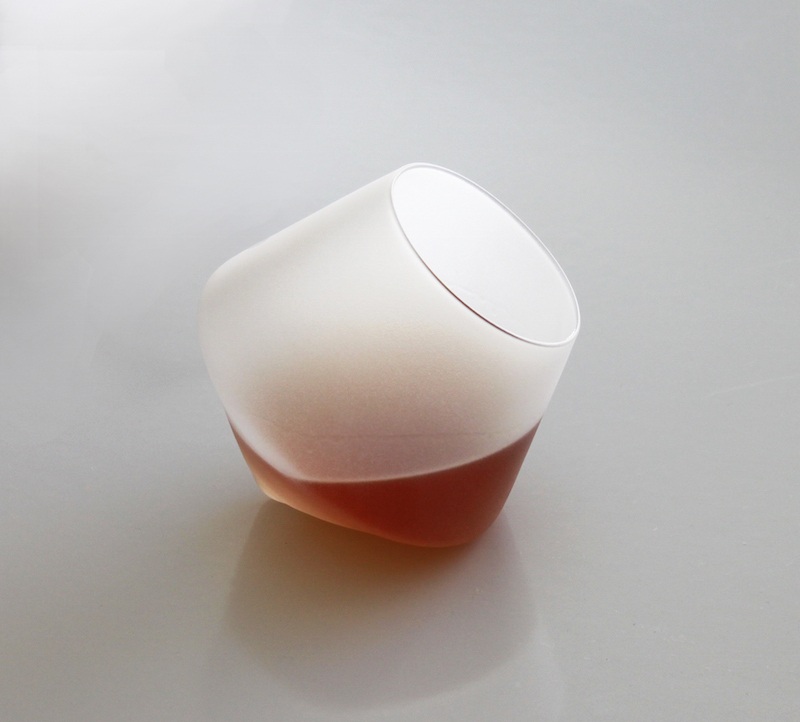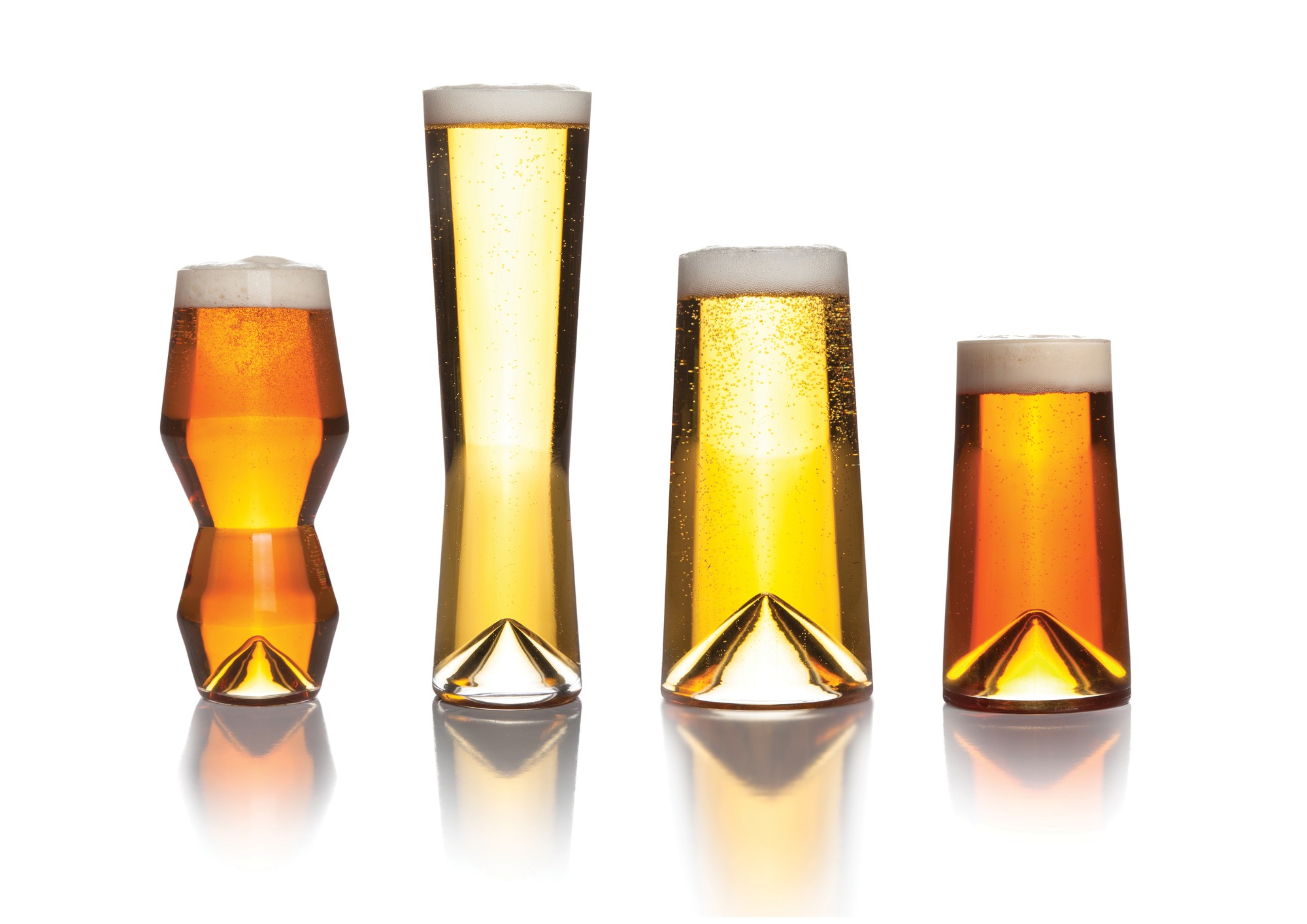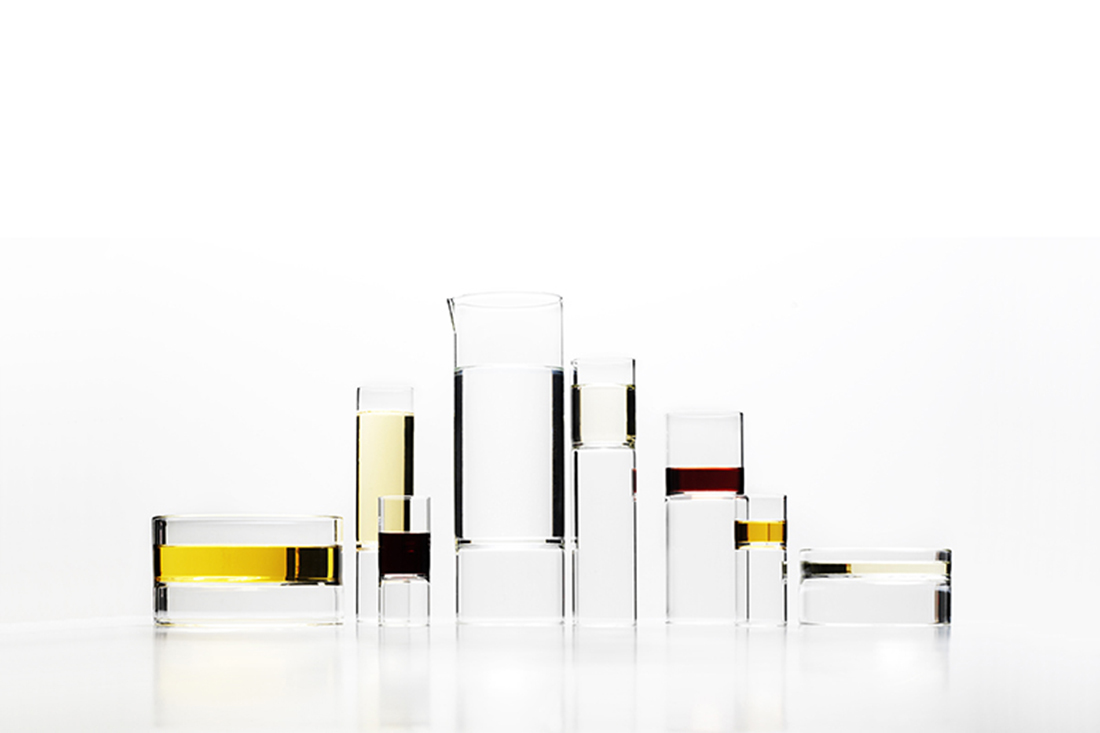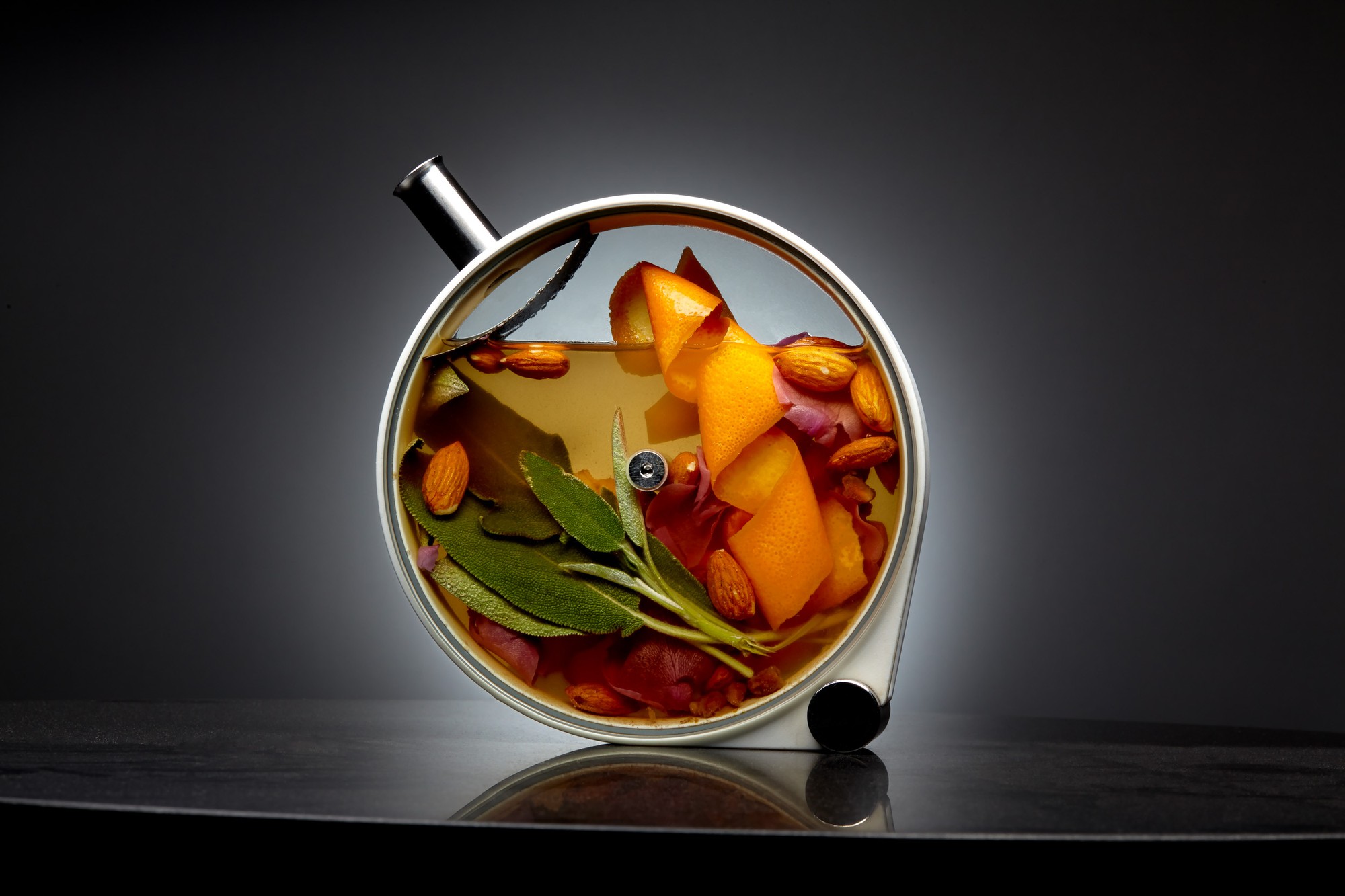When a wine glass slips from the hands of many a human being, the sickly crash to the floor is usually met with a wince and twist of guilt or flush of embarrassment. Sempli owner Daniele Semeraro saw that clumsy accident differently.
“I was working at a wine bar in Italy and broke the stem off of a glass, and when I put it on the counter, it was tilting to one side,” he said.
That mishap turned into the Cupa collection , the designer’s first stab at glassware after a long career designing car interiors for Volkswagen and Volvo. The three sizes of the Cupa glasses range, but they all share one common feature: the tilted positioning that is meant to aerate the wine as it sits on the table.
 The precariously awesome Cupa glass. Photo via Sempli
The precariously awesome Cupa glass. Photo via Sempli
Though there was definitely industry interest in the design—L.A.’s beloved Osteria Mamma stocks it—Semeraro realized the off-balance nature of the glass wasn’t ideal for fast-paced restaurant settings. So he delivered another way to aerate beverages in the Monti collection, four beer glasses that feature an inverted bottom that Semeraro dubs a “mountain.”
“When you pour the beer, the mountain captures the first splash, so that it won’t foam up as much as it would with a flat-bottomed glass,” he says.
It’s not the only considerations he weighed in considering how the rubber would meet the road; or in this case, the beer would meet the glass.
“We wanted the taller pilsner one to fit well in every sized hand, and the height of it keeps the bubbles traveling for a longer time, whereas the zig zag glass helps to release the hoppy aromas of an IPA,” he says.
 A beer (glass) for every hand. Photo via Sempli
A beer (glass) for every hand. Photo via Sempli
Italy seems to be a great place for Americans to find inspiration for innovative glassware. Chicago-based designer Felicia Ferrone of fferrone was living in Milan when she created her iconic Revolution collection — a minimalistic design which melds two glasses into one that was inspired by post-dinner table clutter.
“After these dinner parties there was always this gluttony of glassware on the table of all different shapes and sizes and heights, and for me, it was visually chaotic,” she says. “The Revolution was my way of cleaning up this culmination of the five-hour dinner and the wines, aperitifs and liqueurs that come along with it.”
 Is it art, or a glass, or both? Photo via fferone
Is it art, or a glass, or both? Photo via fferone
After a handful of magazines picked up the design of the prototype, Ferrone received a call from fine dining institution The French Laundry , which has been carrying pieces of the collection ever since. Several other venues have since followed suit, including sister restaurant Per Se and Hong Kong’s The Woods .
Though Ferrone considers how and where her final product may be used, she confirms that her process is propelled by her own vision.
“These glassware lines have always just been these little expressions for me,” she says. “I’m still enjoying living in my own world, which is about singular expression of whatever idea I have in mind, as opposed to a collaborative process.”
Like flipping over a fferone glass, there’s always more than one way to create. It’s all about collaboration for Crucial Detail owner Martin Kastner, who has been creating groundbreaking service ware pieces for Chicago’s molecular gastronomy mecca Alinea ever since they opened in 2005.
“I received a random email from a chef saying that he was looking for somebody to design new ways of serving food,” he recalls, referring to chef Grant Achatz. “After the success of Alinea, we were looking at the cocktail culture through a similar lens and trying to rethink that experience in a more holistic way.”
That conversation led to several pieces for the Aviary, Alinea’s sister cocktail bar, from bespoke ice molds to ceramic cups for hot cocktails. But perhaps the item that’s garnered the most attention is the Porthole, Kastner’s solution to the bar chefs’ need for a teapot.
“I couldn’t really think of a teapot that would be interesting, but I thought this double pane concept would really work as a window into this underwater world—into the world of the infusion,” he says. “It allowed the team to present the ingredients in an interesting way and also load it up with large ingredients that you aren’t able to do with a mason jar or bottle.”
 We’d put this in our kitchens—or hang it on our walls. Photo by Christian Seel
We’d put this in our kitchens—or hang it on our walls. Photo by Christian Seel
The vessel’s slender composition was also perfectly tailored for the bar’s service, where, as Kastner puts it, “table real estate is at a premium.”
Possibilities and problem-solving opportunities like these are why Kastner favors the restaurant-designer collaboration process—especially as the experience of eating out continues to progress.
“Custom service concepts and designs expand the toolbox of the person composing an experience,” he says. “As new techniques evolve, along with our notion of what a cocktail or dining experience may be, it’s custom service ware and tools that come into play as some of the enablers.”
These designers might be enabling us to swipe a glass or two from the bar.










